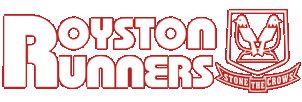Training Tips
Components of base building
building a solid base to your training.
What are the main training techniques you can use in these plans and experiments? On a short scale, your week will incorporate several types of training. In rough order of priority I have listed them below. These are particular sessions in addition to steady or easy running. Not all of them necessarily need to be done every week, and the lower priorities might not be run at all. Note that this is based on a goal race around half-marathon to marathon distance; different goal races will use different base building. As this is base building, a good approach is to finish each session feeling like you could definitely have continued if necessary.
- Rest if you don’t recover from your sessions enough you are at risk of over-training and injury.
- Long runs these will often be around 50% longer than your typical run and run at a steady pace. Normally performed on a Sunday or weekend.
- Conditioning this is your injury proofing. Any advice you have received after an injury will come into this. The two main parts are strength (achieved for example by specific exercises, gym/circuit sessions or hill sessions and flexibility (such as yoga or thorough stretching, which is best done after a gentle warm up). These are separate sessions, stretching after a tough session will be much less effective than a specific stretching session for improving flexibility.
- Race pace running for half marathons or marathons it helps to be used to your current race pace, both to get used to maintaining it and to help with not setting off too fast. It will also help you to run efficiently. This could be done for all of a short run or just part of a longer run.
- Tempo running This is designed to increase the speed that you can run aerobically. It is typically running at your 10 km to 10 mile race pace, run as intervals or continuously, but the same goals can be achieved by faster running in carefully planned intervals. Coached sessions on Thursdays as well as the hills sessions mentioned above.
In addition, racing is useful for experience, to track progress and for the sheer fun of it. Cross training is also a good idea, particularly for conditioning, variety and if injured.
Running Goals – There is a heated ? but ultimately fruitless ? debate about the difference between a jogger and a runner. One distinction that is sometimes proposed is that runners have goals against which they measure their performance.
For some people, the joy of running is setting, and achieving, their goals. This might be to take part in a particular event, to lose weight, to achieve a particular time, or to improve over time.
Some suggestions for setting goals
- Set a goal which is achievable but challenging. It should be specific, positive, and tied to a particular timeframe.
- Seek advice from more experienced runners about what you might realistically achieve. There are some well known relationships between, for example, half marathon times and marathon performances which can be used to estimate what you are likely to be able to do.
- Your goals should be over a timescale of months, rather than weeks or years.
- If your goal is a long way off ? such as completing a marathon ? set some intermediate targets for yourself – such as completing a half marathon. These intermediate targets should be measurable, time-phased, and aimed at producing the optimum performance to meet your ultimate goal.
- Visualise what it will be like to achieve your goal. Promise yourself a reward for when you achieve it.
- Tell your friends, colleagues, and clubmates about your goals. This will help to maintain your commitment. Pin a reminder on the fridge. Get together with a friend, and agree to do something together. You might both agree to run in a race, for example.
- Don’t become obsessive, or put your goal above your family, friends, or your health. If you get injured before your marathon and cannot safely take part, then adjust your goals. You can always take part in another race.
If you are finding hills tricky, imagine using your arms to pull yourself up using two parallel cables. Combine this movement with smaller strides and you should be at the top in no time!
